All Data
Indicator Gauge Icon Legend
Legend Colors
Red is bad, green is good, blue is not statistically different/neutral.
Compared to Distribution
 the value is in the best half of communities.
the value is in the best half of communities.
 the value is in the 2nd worst quarter of communities.
the value is in the 2nd worst quarter of communities.
 the value is in the worst quarter of communities.
the value is in the worst quarter of communities.
Compared to Target
 meets target;
meets target;  does not meet target.
does not meet target.
Compared to a Single Value
 lower than the comparison value;
lower than the comparison value;
 higher than the comparison value;
higher than the comparison value;
 not statistically different from comparison value.
not statistically different from comparison value.
Trend

 non-significant change over time;
non-significant change over time; 
 significant change over time;
significant change over time;  no change over time.
no change over time.
Compared to Prior Value
 higher than the previous measurement period;
higher than the previous measurement period;
 lower than the previous measurement period;
lower than the previous measurement period;
 no statistically different change from previous measurement period.
no statistically different change from previous measurement period.
State: Oregon
Health / Adolescent Health




State: Oregon Positive Youth Development Benchmark: 11th Graders
State: Oregon Positive Youth Development Benchmark: 11th Graders


State: Oregon Positive Youth Development Benchmark: 8th Graders
State: Oregon Positive Youth Development Benchmark: 8th Graders










State: Oregon Students with No Physical Activity: 11th Graders
State: Oregon Students with No Physical Activity: 11th Graders


State: Oregon Students with No Physical Activity: 8th Graders
State: Oregon Students with No Physical Activity: 8th Graders

State: Oregon
Health / Alcohol & Drug Use
State: Oregon Adults who Binge Drink (CDC 500 Cities)
State: Oregon Adults who Binge Drink (CDC 500 Cities)


State: Oregon Age-Adjusted Death Rate due to Alcohol Consumption
State: Oregon Age-Adjusted Death Rate due to Alcohol Consumption


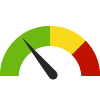


State: Oregon Death due to Opioid Overdose
State: Oregon Death due to Opioid Overdose

State: Oregon Death Rate due to All Drug Overdose
State: Oregon Death Rate due to All Drug Overdose

State: Oregon Death Rate due to Drug Poisoning
State: Oregon Death Rate due to Drug Poisoning
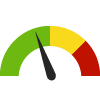




State: Oregon Hospital Admission Rate due to Drug Overdose
State: Oregon Hospital Admission Rate due to Drug Overdose






State: Oregon Individuals Receiving Drug per 1,000 Residents: Opioid
State: Oregon Individuals Receiving Drug per 1,000 Residents: Opioid






State: Oregon Quarterly Opioid Prescription Rate
State: Oregon Quarterly Opioid Prescription Rate


State: Oregon Students who Binge Drink: 11th Graders
State: Oregon Students who Binge Drink: 11th Graders


State: Oregon Students who Binge Drink: 8th Graders
State: Oregon Students who Binge Drink: 8th Graders


State: Oregon Students who Use Alcohol: 11th Graders
State: Oregon Students who Use Alcohol: 11th Graders


State: Oregon Students who Use Alcohol: 8th Graders
State: Oregon Students who Use Alcohol: 8th Graders


State: Oregon
Health / Cancer
State: Oregon Adults with Cancer: Age-adjusted
State: Oregon Adults with Cancer: Age-adjusted

State: Oregon Age-Adjusted Death Rate due to Breast Cancer
State: Oregon Age-Adjusted Death Rate due to Breast Cancer





State: Oregon Age-Adjusted Death Rate due to Cancer
State: Oregon Age-Adjusted Death Rate due to Cancer
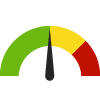




State: Oregon Age-Adjusted Death Rate due to Colorectal Cancer
State: Oregon Age-Adjusted Death Rate due to Colorectal Cancer





State: Oregon Age-Adjusted Death Rate due to Lung Cancer
State: Oregon Age-Adjusted Death Rate due to Lung Cancer





State: Oregon Age-Adjusted Death Rate due to Prostate Cancer
State: Oregon Age-Adjusted Death Rate due to Prostate Cancer
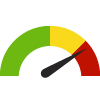




State: Oregon All Cancer Incidence Rate
State: Oregon All Cancer Incidence Rate
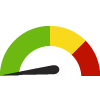



State: Oregon Breast Cancer Incidence Rate
State: Oregon Breast Cancer Incidence Rate




State: Oregon Cancer: Medicare Population
State: Oregon Cancer: Medicare Population
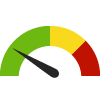



State: Oregon Cervical Cancer Incidence Rate
State: Oregon Cervical Cancer Incidence Rate




State: Oregon Colorectal Cancer Incidence Rate
State: Oregon Colorectal Cancer Incidence Rate




State: Oregon Lung and Bronchus Cancer Incidence Rate
State: Oregon Lung and Bronchus Cancer Incidence Rate




State: Oregon Mammography Screening: Medicare Population
State: Oregon Mammography Screening: Medicare Population




State: Oregon Oral Cavity and Pharynx Cancer Incidence Rate
State: Oregon Oral Cavity and Pharynx Cancer Incidence Rate




State: Oregon Pap Test in Past 3 Years: 21-65
State: Oregon Pap Test in Past 3 Years: 21-65


State: Oregon Prostate Cancer Incidence Rate
State: Oregon Prostate Cancer Incidence Rate




State: Oregon
Health / Diabetes
State: Oregon Age-Adjusted Death Rate due to Diabetes
State: Oregon Age-Adjusted Death Rate due to Diabetes



State: Oregon Diabetes: Medicare Population
State: Oregon Diabetes: Medicare Population




State: Oregon
Health / Disabilities
State: Oregon Adults with Disability
State: Oregon Adults with Disability


State: Oregon Adults with Disability Living in Poverty
State: Oregon Adults with Disability Living in Poverty
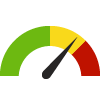


State: Oregon Children with a Disability
State: Oregon Children with a Disability


State: Oregon Persons with a Cognitive Difficulty
State: Oregon Persons with a Cognitive Difficulty


State: Oregon Persons with a Disability
State: Oregon Persons with a Disability


State: Oregon Persons with a Disability
State: Oregon Persons with a Disability


State: Oregon Persons with a Hearing Difficulty
State: Oregon Persons with a Hearing Difficulty


State: Oregon Persons with a Self-Care Difficulty
State: Oregon Persons with a Self-Care Difficulty


State: Oregon Persons with a Vision Difficulty
State: Oregon Persons with a Vision Difficulty


State: Oregon Persons with an Ambulatory Difficulty
State: Oregon Persons with an Ambulatory Difficulty


State: Oregon
Health / Family Planning
State: Oregon Teen Pregnancy Rate: 15-17-year-old
State: Oregon Teen Pregnancy Rate: 15-17-year-old


State: Oregon
Health / Food Safety
State: Oregon Campylobacteriosis Cases
State: Oregon Campylobacteriosis Cases


State: Oregon E. Coli (STEC) Cases
State: Oregon E. Coli (STEC) Cases


State: Oregon Vibriosis Cases
State: Oregon Vibriosis Cases


State: Oregon
Health / Health Care Access & Quality
State: Oregon Adults with Health Insurance: 18-64
State: Oregon Adults with Health Insurance: 18-64



State: Oregon Children with Health Insurance
State: Oregon Children with Health Insurance





State: Oregon Medicare Healthcare Costs
State: Oregon Medicare Healthcare Costs



State: Oregon Non-Physician Primary Care Provider Rate
State: Oregon Non-Physician Primary Care Provider Rate
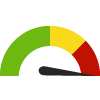


State: Oregon Persons with Health Insurance
State: Oregon Persons with Health Insurance




State: Oregon Persons with Private Health Insurance Only
State: Oregon Persons with Private Health Insurance Only



State: Oregon Persons with Public Health Insurance Only
State: Oregon Persons with Public Health Insurance Only



State: Oregon Preventable Hospital Stays: Medicare Population
State: Oregon Preventable Hospital Stays: Medicare Population




State: Oregon Primary Care Provider Rate
State: Oregon Primary Care Provider Rate



State: Oregon
Health / Health Information Technology
State: Oregon Households with an Internet Subscription
State: Oregon Households with an Internet Subscription



State: Oregon Households with One or More Types of Computing Devices
State: Oregon Households with One or More Types of Computing Devices



State: Oregon Persons with an Internet Subscription
State: Oregon Persons with an Internet Subscription



State: Oregon
Health / Heart Disease & Stroke
State: Oregon Adults with Cardiovascular Disease
State: Oregon Adults with Cardiovascular Disease





State: Oregon Age-Adjusted Death Rate due to Heart Attack
State: Oregon Age-Adjusted Death Rate due to Heart Attack


State: Oregon Age-Adjusted Death Rate due to Heart Disease
State: Oregon Age-Adjusted Death Rate due to Heart Disease



State: Oregon Age-Adjusted Hospitalization Rate due to Heart Attack
State: Oregon Age-Adjusted Hospitalization Rate due to Heart Attack


State: Oregon Atrial Fibrillation: Medicare Population
State: Oregon Atrial Fibrillation: Medicare Population




State: Oregon Heart Failure: Medicare Population
State: Oregon Heart Failure: Medicare Population




State: Oregon High Cholesterol Prevalence
State: Oregon High Cholesterol Prevalence



State: Oregon Hyperlipidemia: Medicare Population
State: Oregon Hyperlipidemia: Medicare Population




State: Oregon Hypertension: Medicare Population
State: Oregon Hypertension: Medicare Population




State: Oregon Ischemic Heart Disease: Medicare Population
State: Oregon Ischemic Heart Disease: Medicare Population




State: Oregon Stroke: Medicare Population
State: Oregon Stroke: Medicare Population




State: Oregon
Health / Immunizations & Infectious Diseases
State: Oregon Acute Hepatitis B Cases
State: Oregon Acute Hepatitis B Cases


State: Oregon Acute Hepatitis C Cases
State: Oregon Acute Hepatitis C Cases


State: Oregon Adolescents Up-to-Date on Immunizations: 13-year-old
State: Oregon Adolescents Up-to-Date on Immunizations: 13-year-old

State: Oregon Adults 65+ with Influenza Vaccination
State: Oregon Adults 65+ with Influenza Vaccination



State: Oregon Adults 65+ with Pneumonia Vaccination
State: Oregon Adults 65+ with Pneumonia Vaccination



State: Oregon Age-Adjusted Death Rate due to Influenza and Pneumonia
State: Oregon Age-Adjusted Death Rate due to Influenza and Pneumonia



State: Oregon Children Up-to-Date on Immunizations: 2 Years
State: Oregon Children Up-to-Date on Immunizations: 2 Years





State: Oregon Chronic Hepatitis B Cases
State: Oregon Chronic Hepatitis B Cases


State: Oregon Chronic Hepatitis C Cases
State: Oregon Chronic Hepatitis C Cases


State: Oregon COVID-19 Daily Average Case-Fatality Rate
State: Oregon COVID-19 Daily Average Case-Fatality Rate




State: Oregon COVID-19 Daily Average Incidence Rate
State: Oregon COVID-19 Daily Average Incidence Rate




State: Oregon Cryptosporidiosis Cases
State: Oregon Cryptosporidiosis Cases


State: Oregon Flu Vaccinations: Medicare Population
State: Oregon Flu Vaccinations: Medicare Population




State: Oregon Giardiasis Cases
State: Oregon Giardiasis Cases


State: Oregon Hepatitis A Cases
State: Oregon Hepatitis A Cases


State: Oregon Legionellosis Cases
State: Oregon Legionellosis Cases


State: Oregon Meningococcal Disease Cases
State: Oregon Meningococcal Disease Cases


State: Oregon Pertussis Cases
State: Oregon Pertussis Cases


State: Oregon Pneumonia Vaccinations: Medicare Population
State: Oregon Pneumonia Vaccinations: Medicare Population




State: Oregon Shigellosis Cases
State: Oregon Shigellosis Cases


State: Oregon West Nile Virus Cases
State: Oregon West Nile Virus Cases


State: Oregon
Health / Maternal, Fetal & Infant Health
State: Oregon Babies with Low Birthweight
State: Oregon Babies with Low Birthweight



State: Oregon Infant Mortality Rate
State: Oregon Infant Mortality Rate




State: Oregon Mothers who Received Adequate Prenatal Care: 5+ Visits
State: Oregon Mothers who Received Adequate Prenatal Care: 5+ Visits


State: Oregon Mothers who Received Early Prenatal Care
State: Oregon Mothers who Received Early Prenatal Care



State: Oregon Mothers who Smoked During Pregnancy
State: Oregon Mothers who Smoked During Pregnancy




State: Oregon
Health / Mental Health & Mental Disorders
State: Oregon Age-Adjusted Death Rate due to Suicide
State: Oregon Age-Adjusted Death Rate due to Suicide




State: Oregon Depression: Medicare Population
State: Oregon Depression: Medicare Population




State: Oregon Frequent Mental Distress
State: Oregon Frequent Mental Distress



State: Oregon Mental Health Provider Rate
State: Oregon Mental Health Provider Rate



State: Oregon Students who have Attempted Suicide: 11th Graders
State: Oregon Students who have Attempted Suicide: 11th Graders


State: Oregon Students who have Attempted Suicide: 8th Graders
State: Oregon Students who have Attempted Suicide: 8th Graders


State: Oregon Students who have been Depressed: 11th Graders
State: Oregon Students who have been Depressed: 11th Graders


State: Oregon Students who have been Depressed: 8th Graders
State: Oregon Students who have been Depressed: 8th Graders


State: Oregon Students who have Considered Suicide: 11th Graders
State: Oregon Students who have Considered Suicide: 11th Graders


State: Oregon Students who have Considered Suicide: 8th Graders
State: Oregon Students who have Considered Suicide: 8th Graders


State: Oregon Unmet Mental Health Care Need Among Students
State: Oregon Unmet Mental Health Care Need Among Students


State: Oregon
Health / Mortality Data
State: Oregon Years of Potential Life Lost
State: Oregon Years of Potential Life Lost


State: Oregon
Health / Older Adults
State: Oregon Adults 65+ with a Disability
State: Oregon Adults 65+ with a Disability


State: Oregon Adults 65+ with a Hearing Difficulty
State: Oregon Adults 65+ with a Hearing Difficulty


State: Oregon Adults 65+ with a Self-Care Difficulty
State: Oregon Adults 65+ with a Self-Care Difficulty


State: Oregon Adults 65+ with a Vision Difficulty
State: Oregon Adults 65+ with a Vision Difficulty


State: Oregon Adults 65+ with an Independent Living Difficulty
State: Oregon Adults 65+ with an Independent Living Difficulty


State: Oregon Age-Adjusted Death Rate due to Alzheimer's Disease
State: Oregon Age-Adjusted Death Rate due to Alzheimer's Disease



State: Oregon Alzheimer's Disease or Dementia: Medicare Population
State: Oregon Alzheimer's Disease or Dementia: Medicare Population




State: Oregon
Health / Oral Health
State: Oregon Dentist Rate
State: Oregon Dentist Rate



State: Oregon Students who have had a Cavity: 11th Graders
State: Oregon Students who have had a Cavity: 11th Graders


State: Oregon Students who have had a Cavity: 8th Graders
State: Oregon Students who have had a Cavity: 8th Graders






State: Oregon
Health / Other Conditions
State: Oregon Chronic Kidney Disease: Medicare Population
State: Oregon Chronic Kidney Disease: Medicare Population




State: Oregon Osteoporosis: Medicare Population
State: Oregon Osteoporosis: Medicare Population








State: Oregon
Health / Physical Activity
State: Oregon Adults Engaging in Regular Physical Activity
State: Oregon Adults Engaging in Regular Physical Activity


State: Oregon
Health / Prevention & Safety
State: Oregon Age-Adjusted Death Rate due to Falls
State: Oregon Age-Adjusted Death Rate due to Falls




State: Oregon Age-Adjusted Death Rate due to Firearms
State: Oregon Age-Adjusted Death Rate due to Firearms





State: Oregon Age-Adjusted Death Rate due to Unintentional Injuries
State: Oregon Age-Adjusted Death Rate due to Unintentional Injuries





State: Oregon Age-Adjusted Death Rate due to Unintentional Poisonings
State: Oregon Age-Adjusted Death Rate due to Unintentional Poisonings




State: Oregon
Health / Respiratory Diseases



State: Oregon Asthma: Medicare Population
State: Oregon Asthma: Medicare Population




State: Oregon COPD: Medicare Population
State: Oregon COPD: Medicare Population




State: Oregon
Health / Sexually Transmitted Infections
State: Oregon 5-Year Gonorrhea Rate per 100,000: Age-Adjusted
State: Oregon 5-Year Gonorrhea Rate per 100,000: Age-Adjusted


State: Oregon Age-Adjusted HIV Case Rate per 100,000 population
State: Oregon Age-Adjusted HIV Case Rate per 100,000 population

State: Oregon Chlamydia Incidence Rate
State: Oregon Chlamydia Incidence Rate




State: Oregon Gonorrhea Incidence Rate
State: Oregon Gonorrhea Incidence Rate





